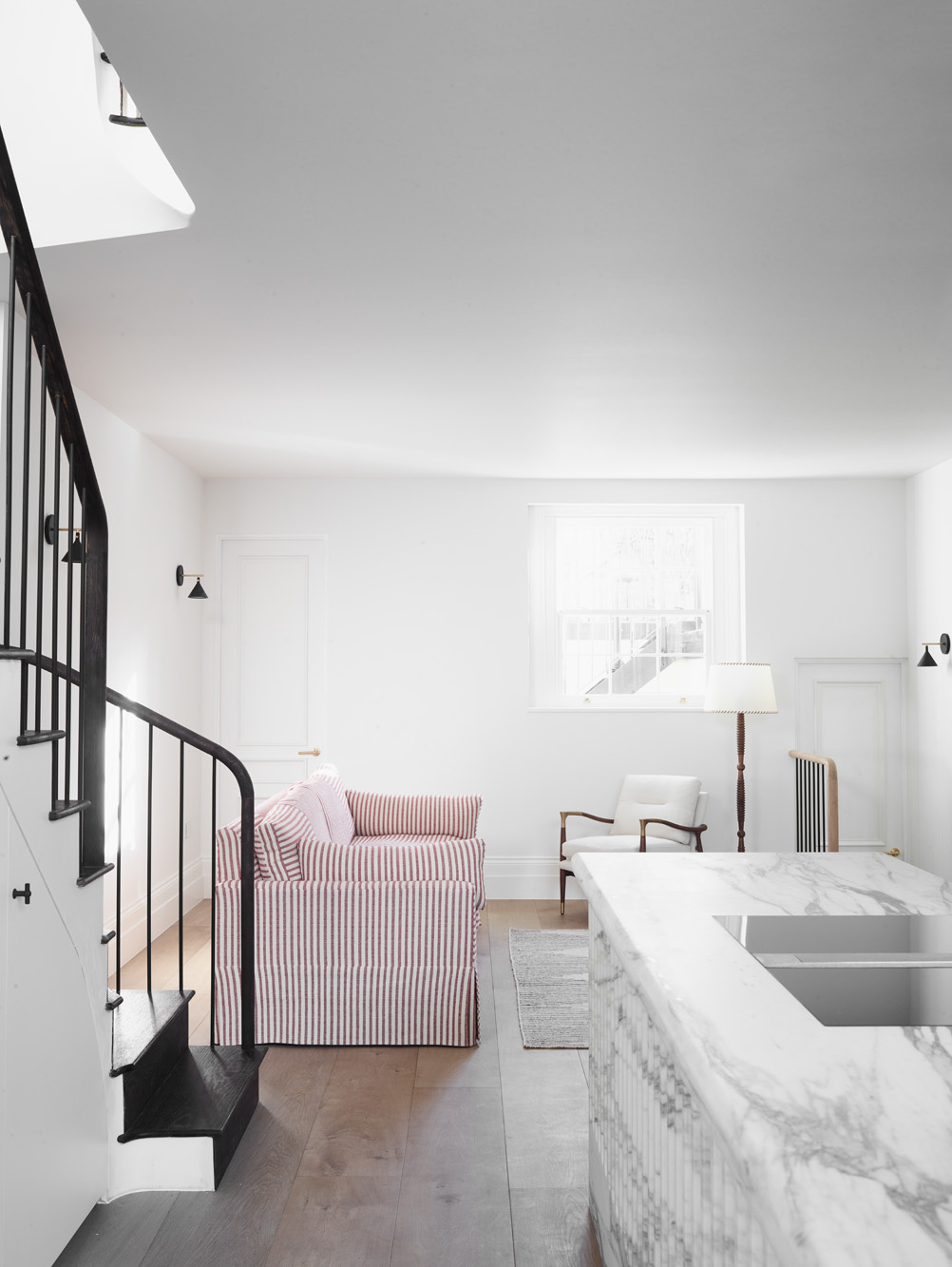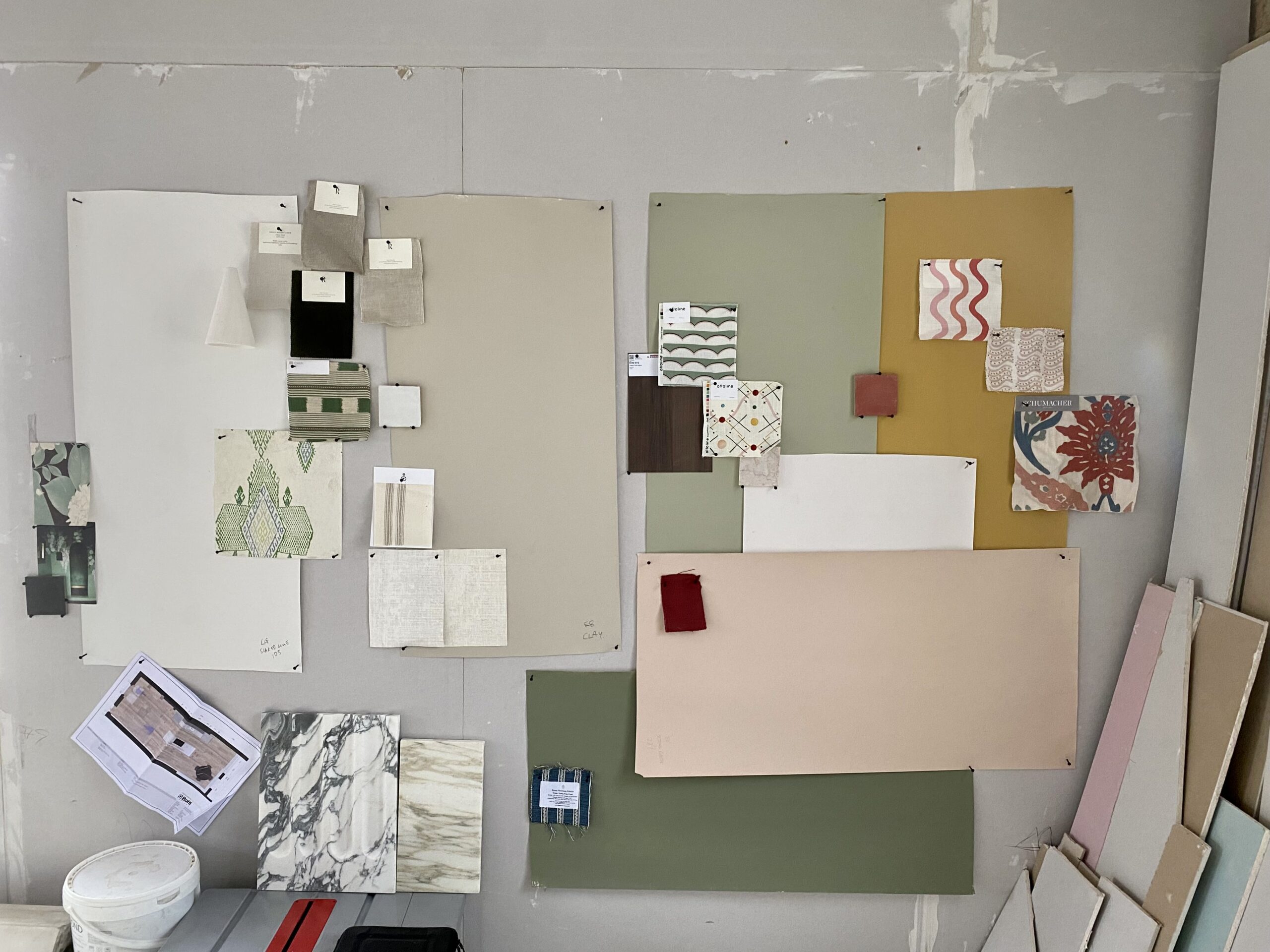Stripped back to its bones, it took the vision of Studio Spiteri to resurrect this Holland Park home.
Years of neglect can wear down even the most exceptional of properties, and such was the case with this Holland Park home. On an end-of-terrace spot near one of London’s elegant squares, the building hadn’t been touched for decades, and had spent recent years as a rundown B&B. But it had potential. And that potential was spotted by Studio Spiteri, a family-run residential developer with a wealth of experience in transforming lacklustre London buildings.
The results are staggering. The house has been extensively extended and the interior transformed with tactile marbles, dark herringbone floors and a deliciously curved balustrade.
The only trace left of the existing stucco fronted building is the external walls. Stripped back to its bones, the place is as unrecognisable structurally speaking as it is aesthetically. During the renovation, the building was underpinned and pointed, and the team removed one of the chimney breasts, added a floor and installed structural floors to carry the weight of the building differently.



“Installing new structural floors was integral to achieving our goals with the space. With no structural walls or columns internally we could manipulate the space to its full potential,” explains George Spiteri, founder and creative director of Studio Spiteri. “These floors helped to insulate and remove bounce, meaning we could even adjust the ceiling heights where necessary.”
They were also game changing from a floor plan perspective. “As none of the internal walls are structural, we had total freedom with the layout, and so we have no awkward bathroom or box rooms,” he adds. “Often classic stucco houses in London have an overly large front bedroom and a box bedroom to the rear. These floors eliminated this problem. We also wanted a marble bath in the master bathroom, which needed extra support anyway.”
Stripping the building right back also enabled Studio Spiteri to make more subtle changes that have had a significant impact on the fabric and feel of the space. The original staircase, which was dark and bulky in design, has been replaced with a custom one, complete with a continuous curved handrail that runs up all five levels. An elegant gap down the centre filters light from the large glass roof light through to all floors.



As you might expect, many of the other finishes are custom made, too, from the long, thin parquet flooring – “there’s only one factory in Europe that can make pieces to these dimensions” – to much of the lighting and the cabinetry, which is a mixture of rattan, spray and hand-painted finishes. In the master bedroom, the vanity, bath and shower tray are all bespoke, carved out of the same block of Carrara marble. “The look and feel of natural materials are what give the interior character,” says George.
Materiality also triumphs in the kitchen, where dramatic Boffi units with metallic doors are combined with white pantry cupboards. The ribbed marble island is a clear focal point, with its chunky worktop and green undertones. indeed, every detail has been considered – including a pocket door in front of the ovens, allowing them to be hidden away if entertaining.
“We designed the two reception floors with key visual differences to suit both family time and more formal occasions,” explains George. Downstairs in the open-plan kitchen-living-dining room a light wood has been used for the floors and the classic architectural details have been removed to strike a relaxed note.



The raised ground floor is more of a formal, traditional space, with a library and music nook that takes advantage of a rare large side window. Meanwhile, a customised timber-framed glazed wall retains the visibility of the showpiece staircase without compromising the cosiness of the room.
“Often if these spaces are left open, they feel like a lobby or hallway, but we really didn’t want to use standard Crittall as we’ve seen it a lot and it can feel too industrial for a family home,” says George. “The design of the glazed wall echoes the original window frames, meaning they are modern but still sympathetic to the traditional design.”
Up on the second floor, the décor takes a playful turn– think bright, patterned rooms, complete with custom bobbin cornicing – while the third floor provides a guest suite and atmospheric study that embraces the moodier light of its north-facing outlook.


“The look and feel of natural materials are what give the interior character."
- George Spiteri
However radical the transformation, the original architecture of the building has been respected and flows through the interior detailing, from the cornicing to the custom design of the extra tall doors. “We love original features and design,” says George. “We even removed and painstakingly restored the original fireplace to ensure we retained the spirit of the building and made it feel as grand and comfortable as was originally intended.”
The restoration might have been a herculean task, but there’s no doubt that the place has been given a new lease of life as an elegant home that’s both true to its past but also perfect for contemporary family life. Its potential has certainly been realised.







